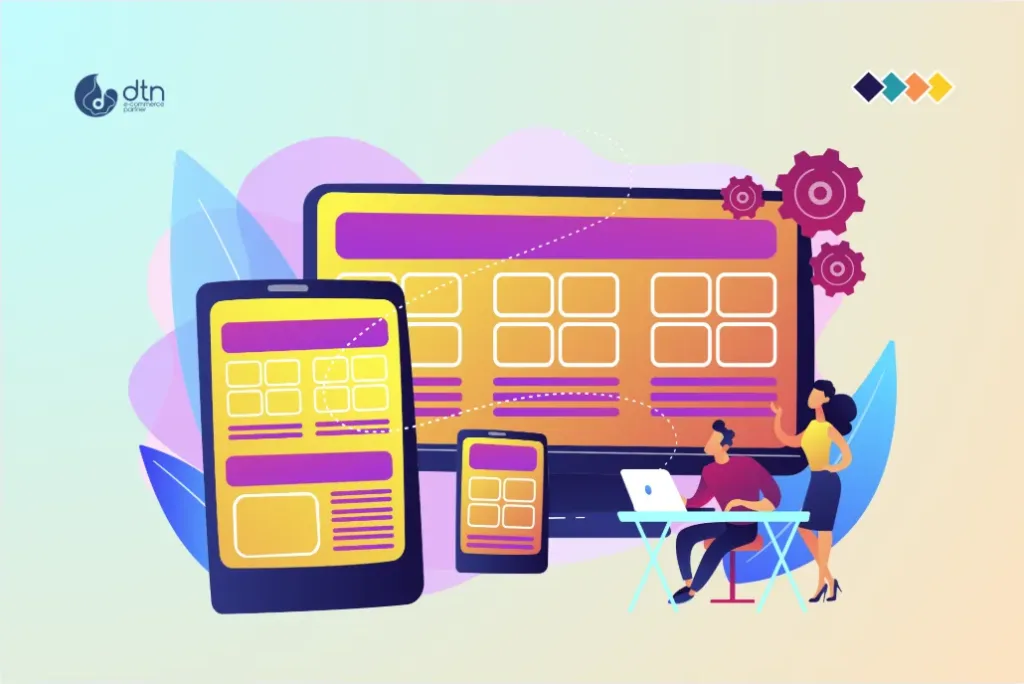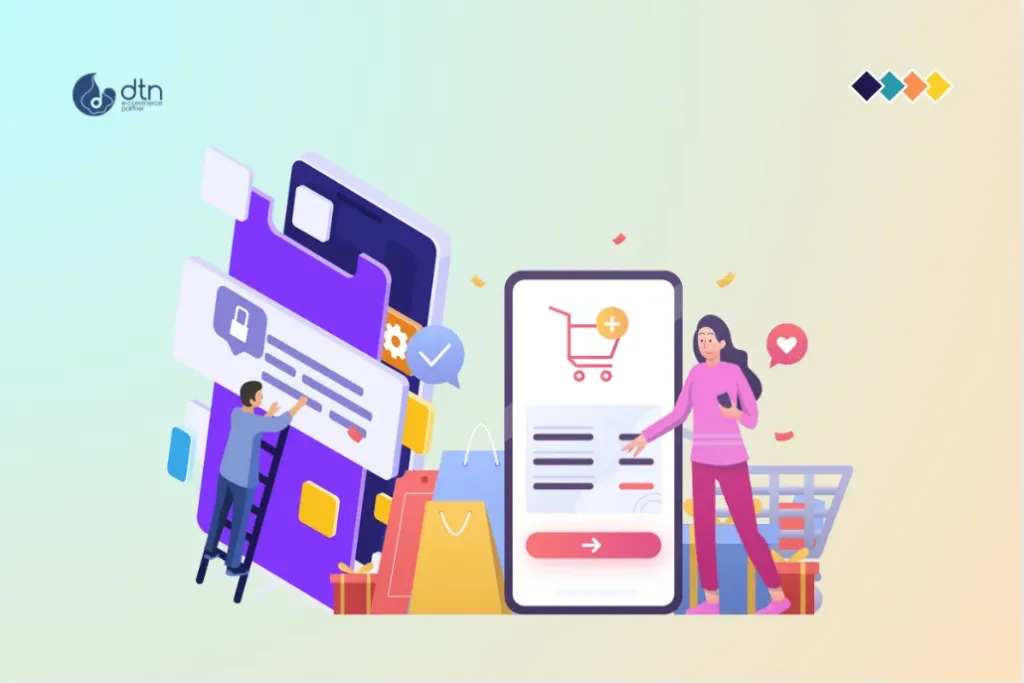In today’s digital landscape, mobile devices reign supreme. They’re the primary way many consumers browse the internet, connect with friends, and even manage their finances. And for e-commerce businesses, this means that optimizing for mobile is no longer an option, it’s a necessity.
This is particularly true for the checkout process. A clunky, slow, or frustrating mobile checkout experience can lead to cart abandonment, lost sales, and frustrated customers. To avoid this, it’s crucial to implement mobile-first design principles in your e-commerce checkout flow.
Table of Contents
What is Mobile-First Design?
Mobile-first design is an approach to website development that prioritizes the user experience on mobile devices. It focuses on creating a streamlined and intuitive interface, prioritizing content clarity, accessibility, and ease of navigation, all while keeping screen size and touch interaction in mind.
This doesn’t mean neglecting desktop users, it simply means starting with the foundation of a great mobile experience and then scaling it up to work seamlessly on larger screens. This approach has numerous benefits:
- Improved User Experience: Mobile users will have a more enjoyable and efficient shopping experience, leading to increased customer satisfaction.
- Increased Conversion Rates: By simplifying the checkout process, you can encourage more users to complete their purchases, ultimately increasing your sales.
- Reduced Bounce Rates: A mobile-friendly checkout makes it less likely for users to abandon their carts, lowering your bounce rate and improving your overall website performance.
- SEO Boost: Mobile-first indexing by Google rewards websites optimized for mobile devices. This can improve your search engine rankings and make your site more visible to potential customers.

Key Mobile-First Design Principles for E-Commerce Checkouts
Now let’s delve into the key principles that will help you craft a smooth and efficient mobile checkout experience:
1. Simplicity is King
- Minimalist Design: Eliminate unnecessary distractions. Focus on core checkout information like product details, total cost, and payment options.
- Clear Call-to-Actions (CTAs): Use prominent and easily clickable buttons for actions like “Proceed to Checkout,” “Add to Cart,” and “Complete Purchase.”
- Concise Forms: Don’t overwhelm users with long, complex forms. Divide the process into smaller, more manageable steps.
- Progressive Disclosure: Only reveal necessary information at each stage. For instance, show shipping options after the user enters their billing address.
2. Prioritize Touch Interaction
- Large Tap Targets: Buttons and interactive elements should be large enough to be easily tapped with a finger. Avoid tiny buttons or close proximity of clickable elements.
- Clear Visual Cues: Provide visual feedback when a user interacts with an element, such as a color change or animation, to signal successful actions.
- Intuitive Gestures: Use familiar gestures like swiping, tapping, and scrolling to navigate the checkout process. Avoid complex or unfamiliar gestures.
- Optimize for One-Handed Use: Design your checkout to be usable with one hand. This is especially important for mobile users, as they often navigate their phones with one hand while carrying things or moving.
3. Optimize for Speed and Performance
- Fast Loading Times: Users are impatient. Optimize images, scripts, and code to ensure lightning-fast loading times, even on slower mobile connections.
- Progressive Loading: Display content in stages, loading the most important elements first. This gives users the impression of a faster loading experience.
- Minimize Redirects: Reduce the number of redirects during the checkout process. Each redirect adds time and can lead to increased bounce rates.
- Mobile-Optimized Payment Options: Offer a variety of popular and secure payment methods that are optimized for mobile use.
4. Accessibility is Key
- Text Size: Make sure text is easily readable on a small screen. Use a sufficient font size and good contrast for readability.
- Screen Readers: Ensure your checkout process is accessible to users with visual impairments by implementing screen reader compatibility.
- Clear Navigation: Provide clear and concise navigation options, such as breadcrumb trails, to help users easily move through the checkout process.
- Language Support: Offer your checkout process in multiple languages if your target audience is diverse.
5. Security and Trust
- SSL Certificate: Use an SSL certificate to encrypt data transmitted between your site and the user’s device.
- Clear Security Indicators: Display security badges and trust seals to reassure users about the security of their transactions.
- Transparency: Clearly explain your privacy policy and data collection practices.
- Contact Information: Provide clear and easy-to-find contact information in case users have questions or need assistance.
6. Error Prevention and Feedback
- Real-Time Validation: Use real-time form validation to guide users and prevent errors. Provide clear feedback on incorrect input.
- Helpful Error Messages: If an error occurs, provide users with clear and concise error messages that explain the problem and guide them towards a solution.
- Progress Indicators: Show users how far they are in the checkout process with progress bars or indicators. This approach helps maintain engagement while minimizing anxiety..
- Autofill Functionality: Implement autofill functionality to save users time and effort by automatically filling in common information like addresses or payment details.
7. Testing and Optimization
- A/B Testing: Use A/B testing to compare different checkout designs and find the version that performs best with your target audience.
- User Feedback: Collect user feedback through surveys, usability testing, and analytics to identify areas for improvement.
- Analytics: Monitor your checkout process performance using analytics tools to track key metrics like conversion rates, bounce rates, and average order value.

Examples of Mobile-First Checkout Design Best Practices
1. Amazon
- Simple and streamlined checkout flow: Amazon’s checkout is incredibly user-friendly, with a minimal design that focuses on the essential information.
- One-click purchase: For frequent shoppers, Amazon offers the “One-Click Purchase” feature, allowing them to complete orders with a single click. This provides a seamless and fast checkout experience.
- Autofill functionality: Amazon uses autofill for both shipping and payment information, saving users time and effort.
2. Etsy
- Clear progress indicators: Etsy provides a clear visual progress indicator that shows users how far they are in the checkout process.
- Mobile-optimized payment options: Etsy offers a wide range of popular mobile payment options, including Apple Pay, Google Pay, and PayPal.
- Flexible shipping options: Etsy allows users to choose from various shipping methods and delivery speeds, making it convenient for buyers.
3. Nike
- Simplified navigation: Nike’s mobile checkout process is highly intuitive and easy to navigate. It uses clear call-to-actions and a minimalist design.
- Visual product detail display: Nike provides high-quality product images and detailed descriptions on their checkout page, encouraging users to finalize their purchase.
- Secure payment gateway: Nike uses a secure payment gateway to protect user data and build trust.

Conclusion
The mobile checkout experience is a crucial part of your e-commerce business. By adopting a mobile-first approach and following the design principles outlined above, you can significantly improve user experience, reduce cart abandonment, and ultimately increase your sales.
Remember, the goal is to make the checkout process as simple, intuitive, and efficient as possible for your mobile users. By focusing on their needs and preferences, you can create a frictionless and engaging checkout experience that will keep customers coming back for more.
Frequently Asked Questions
We’ve compiled a list of answers to common questions.
Why is a mobile-first design important for e-commerce checkouts?
A mobile-first design is crucial because mobile devices are the primary way many consumers browse and shop online. Optimizing for mobile ensures a streamlined, intuitive, and efficient checkout experience, reducing cart abandonment and increasing conversion rates.
What are the key principles of mobile-first design for e-commerce checkouts?
Key principles include simplicity in design, prioritizing touch interaction, optimizing for speed and performance, ensuring accessibility, maintaining security and trust, preventing errors, and continuously testing and optimizing the checkout flow.
How can businesses improve the touch interaction experience during mobile checkout?
Businesses can enhance touch interaction by using large tap targets for clickable elements, providing visual cues for successful actions, implementing intuitive gestures (like swiping and scrolling), and designing for one-handed use to accommodate typical mobile behavior.
What role does security play in mobile checkout optimization?
Security is vital for building trust and confidence among customers. Implementing SSL certificates, displaying security badges, providing clear information on data collection practices, and offering accessible contact information all contribute to a secure and trustworthy checkout experience.
How can businesses use testing and analytics to optimize their mobile checkout?
Businesses can use A/B testing to compare different checkout designs and identify the most effective version. Gathering user feedback through surveys and usability tests, along with monitoring analytics like conversion rates and bounce rates, helps pinpoint areas for improvement and ensures a continually optimized checkout experience.



